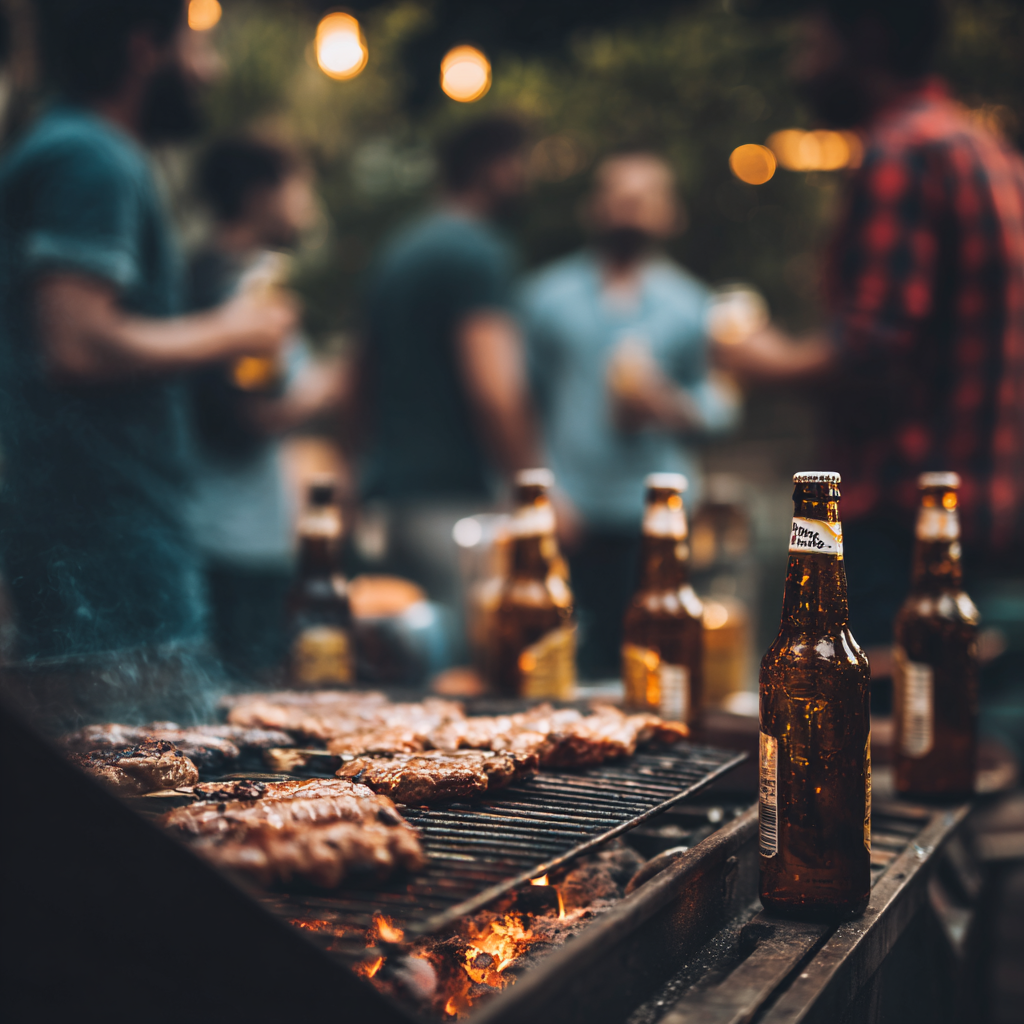When you start moving from “basic gas grill” to “outdoor kitchen level,” one of the upgrades you’ll keep seeing is the rear or back burner which is usually an infrared burner mounted on the back wall of the grill. You’ll see it paired with a rotisserie kit, you’ll see it on premium built-ins and carts, and you’ll see it highlighted as a “must-have” for whole chickens, roasts, and high-heat finishing.
So…is it really worth it?
Let’s break down what a rear infrared burner actually does, how it’s different from your main burners, the real-world pros and cons, and when it makes sense to spend for it, especially if you’re shopping with ANJ Appliances & Outdoor Living for an upgraded grill or a full outdoor kitchen.
What Is a Back / Rear Infrared Burner?
A rear burner is a dedicated heat source mounted on the back interior wall of the grill. Instead of heating the air inside the grill like conventional burners do, it uses infrared energy, a ceramic, glass, or steel surface gets super-hot from gas and that it's surface radiates heat directly toward the food.
That direct, radiant heat is perfect for food that is rotating in front of it (rotisserie) or for finishing/searing without flare-ups.
How Infrared Is Different From Standard Gas Burners
-
Conventional gas burner: heats air → hot air cooks food. Good for general grilling, but air is a poor conductor.
-
Infrared burner: heats a surface → surface emits heat waves → heat hits food directly. This is why infrared can hit 500°F+ in minutes, and on some systems even higher.
-
Result: faster preheat, more intense heat, less drying air movement.
That’s why premium grills can reach steak-house temps in 2–3 minutes, while most everyday grills top out around 500–550°F.
Advantages of a Rear Infrared Burner
1. Faster Cooking / Faster Preheat
Infrared burners get hot quickly, often 500°F+ in just a few minutes. That matters when you’re grilling on a weeknight or entertaining and don’t want to wait. Great for busy cooks.
2. Even, Directed Heat
Because the burner is behind the food and the food is turning (rotisserie), you get very uniform exposure to heat. That means fewer hot/cold spots and fewer “one side burnt, one side pale” problems.
3. Better Flavor and Moisture
Infrared heat doesn’t blast the food with dry, moving air, so meats often stay juicier. That’s why a rear burner shines for:
-
whole rotisserie chickens
-
prime rib
-
porchetta
-
turkey breast
-
leg of lamb
The outside browns and crisps, the inside keeps its moisture.
4. Fewer Flare-Ups
One big selling point: less direct dripping on an open flame. Infrared systems tend to vaporize drippings or keep them off the flame path, so you get safer, steadier heat and cleaner flavor.
5. Perfect Match for Rotisserie Cooking
Yes, an infrared rear burner absolutely helps cook rotisserie chicken. It gives you:
-
steady radiant heat across the entire bird
-
beautiful, even browning
-
reduced chance of drying the breast
-
shorter total cook time
That’s exactly why rotisserie brackets are usually mounted right in front of that rear burner.
Disadvantages / Things to Be Aware Of
1. Higher Initial Cost
Rear infrared burners are usually found on better-built, higher-priced grills. So even though the burner itself is “just one feature,” you’re often stepping into the premium tier of outdoor cooking. For budget shoppers, that can be a pause point.
2. Learning Curve
Infrared runs hotter and cooks faster than most people are used to. If you walk away for 10 minutes like you do with a regular gas grill, you can overdo it. There’s usually a short adjustment period especially for fish, veggies, and thinner cuts.
3. Potential to Overcook
Because the heat is intense and direct, delicate foods or low-and-slow items aren’t ideal in front of the rear burner. You can mitigate that by:
-
using lower settings (if available)
-
moving food further away
-
starting food on the main burners, then finishing on the rear burner
But it’s still something to consider.
4. It’s a Specialized Burner
A rear burner is not a full-time replacement for your main burners. Think of it as a finishing / rotisserie / high-heat tool. If you never do rotisserie, rarely roast whole proteins, and mostly grill burgers and hot dogs, you might not use it as often.
Quick Comparison
| Feature/Need | Rear Infrared Burner | Standard Main Burners |
|---|---|---|
| Rotisserie chickens/roasts | Excellent | Good, but less even |
| Browning/crisping skin | Excellent | Moderate |
| Flare-up resistance | High | Medium |
| Preheat speed | Very fast | Moderate |
| Low/slow grilling | Not ideal alone | Better |
| Price impact | Higher | Lower |
Is a Rear Burner Worth It?
Yes, if:
-
You like doing whole chickens, roasts, or holiday meats outdoors.
-
You want steak-house-style browning/finishing.
-
You entertain and want consistent, repeatable results.
-
You’re already shopping the premium category.
Maybe not, if:
-
You only grill quick weeknight basics.
-
You never use a rotisserie.
-
You’re trying to keep the build under a certain budget.
Why ANJ Appliances & Outdoor Living Talks About This
We sell a lot of built-in and cart grills that are already plumbed and prepped for rear infrared burners because outdoor kitchens are about versatility. When you add a rear burner, you:
-
unlock rotisserie cooking outdoors
-
reduce flare-ups on fatty cuts
-
get a “finisher” for steaks and ribs
-
add real value to your outdoor kitchen project
That’s exactly the kind of feature that helps justify the step up to a premium grill package.
A rear infrared burner isn’t just hype, it’s a specialized, high-heat tool that makes rotisserie, roasting, and finishing better, faster, and more consistent. The downside is cost and a small learning curve. If those two aren’t dealbreakers, it’s one of the smartest upgrades you can make on a serious outdoor grill.
_______
Ready to build a grill station that actually does rotisserie the right way?
Shop rear-infrared / rotisserie-ready grills at ANJ Appliances & Outdoor Living using our new Product Finder or contact us to match the right grill head to your outdoor kitchen layout, fuel type, and budget. We can help you choose:
-
rear-burner vs. no rear-burner models
-
cart vs. built-in
-
natural gas vs. LP hard-plumbed
-
rotisserie kits and accessories to complete the setup
We’ll spec it to the way you cook, so you actually use the feature, not just pay for it.








